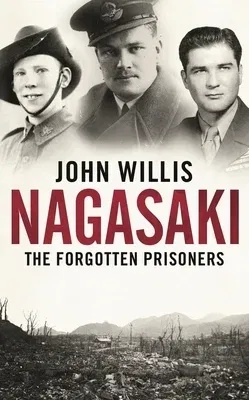This is one of the most remarkable untold stories of the Second World
war. At 11.02 am on an August morning in 1945 America dropped the
world's most powerful atomic bomb on the Japanese port city of Nagasaki.
The most European city in Japan was flattened to the ground 'as if it
had been swept aside by a broom'. More than 70,000 Japanese were
killed. At the time, hundreds of Allied prisoners of war were working
close to the bomb's detonation point, as forced labourers in the
shipyards and foundries of Nagasaki.
These men, from the Dales of Yorkshire and the dusty outback of
Australia, from the fields of Holland and the remote towns of Texas, had
already endured an extraordinary lottery of life and death that had
changed their lives forever. They had lived through nearly four years of
malnutrition, disease, and brutality. Now their prison home was the
target of America's second atomic bomb.
In one of the greatest survival stories of the Second World War, we
trace their astonishing experiences back to bloody battles in the
Malayan jungle, before the dramatic fall of Fortress Singapore, the
mighty symbol of the British Empire. This abject capitulation was
followed by surrender in Java and elsewhere in the East, condemning the
captives to years of cruel imprisonment by the Japanese.
Their lives grew evermore perilous when thousands of prisoners were
shipped off to build the infamous Thai-Burma Railway, including the
Bridge on the River Kwai. If that was not harsh enough, POWs were then
transported to Japan in the overcrowded holds of what were called hell
ships. These rusty buckets were regularly sunk by Allied submarines, and
thousands of prisoners lived through unimaginable horror, adrift on the
ocean for days. Some still had to endure the final supreme test, the
world's second atomic bomb.
The prisoners in Nagasaki were eyewitnesses to one of the most
significant events in modern history but writing notes or diaries in a
Japanese prison camp was dangerous. To avoid detection, one Allied
prisoner buried his notes in the grave of a fellow POW to be reclaimed
after the war, another wrote his diary in Irish. Now, using unpublished
and rarely seen notes, interviews, and memoirs, this unique book weaves
together a powerful chorus of voices to paint a vivid picture of defeat,
endurance, and survival against astonishing odds.

